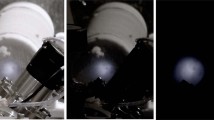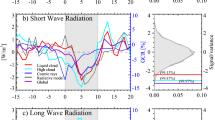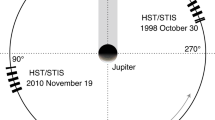Abstract
THE eclipse observations of August 31, 1932, and Appleton's Tromsø observations, indicate fairly certainly that the normal daytime ionisation in the E layer (100 km. height) is due mainly to solar wave radiation, and not to neutral corpuscles as Chapman suggested. But the ionising wave radiation may not be ultra-violet light (in amount corresponding to Planck's formula at the sun's temperature) as now generally supposed. As Eckersley has remarked, if the ionising agent is wave radiation, it must be so penetrating as to be of Röntgen type; but he disbelieves in the emission by the sun of an adequate amount of such radiation (Elias, however, for a time considered such rays to be the cause of the E-layer).
This is a preview of subscription content, access via your institution
Access options
Subscribe to this journal
Receive 51 print issues and online access
$199.00 per year
only $3.90 per issue
Buy this article
- Purchase on Springer Link
- Instant access to full article PDF
Prices may be subject to local taxes which are calculated during checkout
Similar content being viewed by others
Author information
Authors and Affiliations
Rights and permissions
About this article
Cite this article
MÜLLER, E. Ionisation of the Kennelly-Heaviside Layer. Nature 135, 187–188 (1935). https://doi.org/10.1038/135187c0
Issue Date:
DOI: https://doi.org/10.1038/135187c0
Comments
By submitting a comment you agree to abide by our Terms and Community Guidelines. If you find something abusive or that does not comply with our terms or guidelines please flag it as inappropriate.



